How to drive the data socket Rj45?
Hello everyone, I have previously posted an article on how to nail the rj45 nib, I even shot it in a video. Let’s take a look at how to hammer a wall-mounted tip.
I will not share any information about rj45 here, as I have made a detailed explanation before. If you do not have any information about this subject and want to learn in detail, you can read the following article I wrote before.
Let’s get to our topic.
What is a data plug?
Data sockets are the sockets that connect an Ethernet cable and allow us to access the internet.
Normally, when we want to connect to an internet, we connect one end of the Ethernet cable to the modem and after connecting the other end to our computer, we have internet access. This is an ordinary action for standard home users. But in larger places, such as offices, factories, large workplaces, since we cannot go and connect to the internet by plugging a cable into the modem (there is a server room where these coblocks are gathered, and it is probably very difficult for you to enter here), we need to establish a connection to a cable with access to the modem. These connections are brought through the wall to the wall sockets in the room we work in. The female connector to which the cables in the wall are connected is called the data socket.
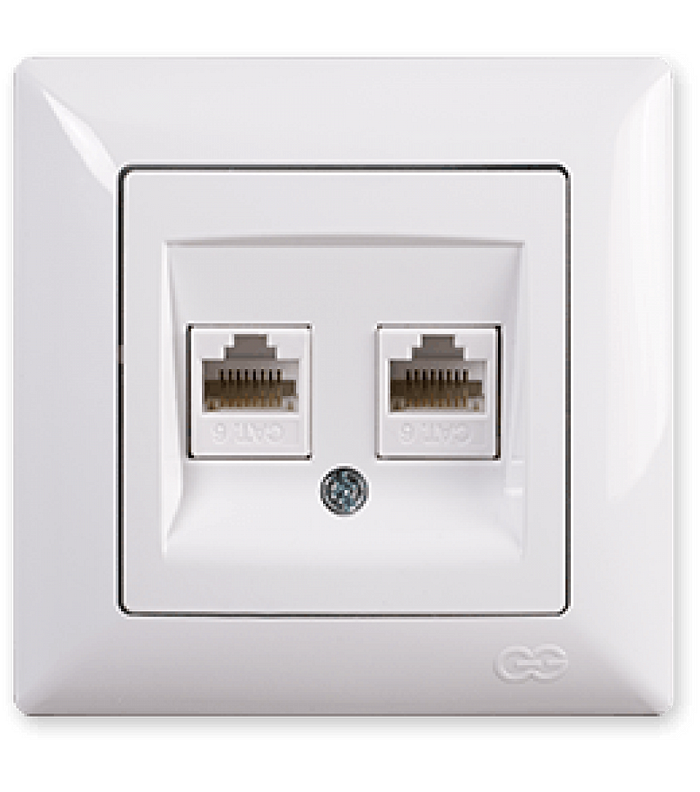
As seen in the picture, there are some that are embedded in the wall, as well as those that are not. You must have seen them. Even your home has this type of outlet, but this socket is probably used for the telephone line.
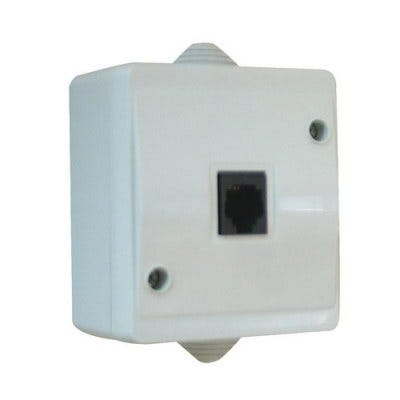
This type of sockets are used for the telephone and internet data cable. A data is received wirelessly to the location of these sockets. After connecting this data cable to this female connector, we connect to this connector with an ethernet cable and have internet access.
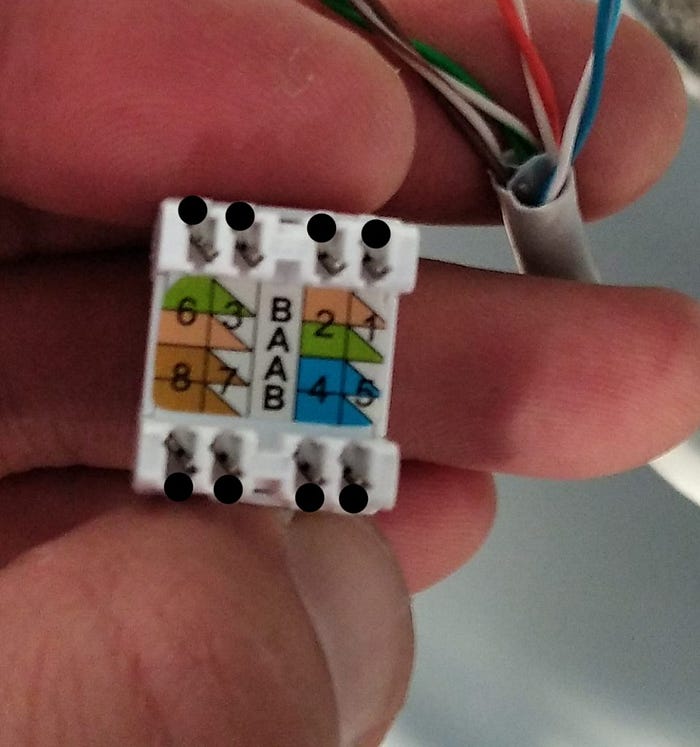
There is a small plastic piece inside these sockets. We perform the process of fastening the incoming data cable on this piece.
There are two templates on this plastic piece. One is T-568B and the other is T-568A. It is shown as A and B, not written at length on the template. Whatever standard we want to make, we have to make the cable layout that way. T-568B standard is used in our country. For this reason, we must follow the parts written on the template and perform the cable fastening process. The colored cables on the template will be nailed in the spaces I marked with a black dot on the picture.
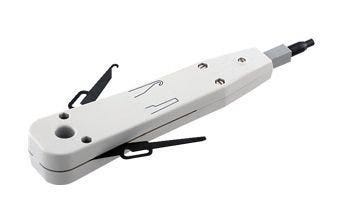
There is a specially designed tool for this. It is very easy to light up such connections with the tool shown. If you don’t have such a tool, it’s okay. If you press the wires forward with a thin flat screwdriver, you do the same thing.
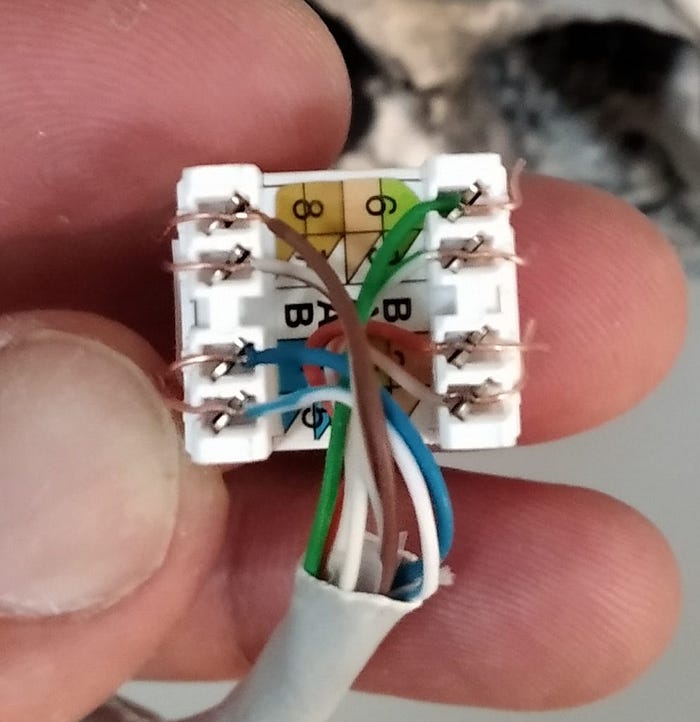
When we proceed according to the B standard, respectively:
1- Orange white
2-Orange
3-Green-white
4-Blue
5-Blue-white
6-Green
7-Brown-white
8-Brown
When we check on the plastic part, you can see that the B standard corresponds to the wires of these colors respectively.
After properly seating and pressing the wires, they will not move easily again.
That’s all there is to flashing the data socket. This was for the data cable (cat5 or cat6), you can do this in the same way for the telephone line. There are only two wires in the telephone cable. It will be even easier to make the telephone cable this way.
I wish you happy and beautiful days….
This article was first published on the website www.kenanyaman.com on 01.10.2020
